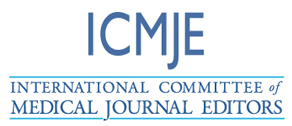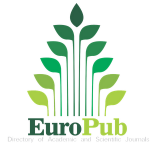A Study of Head injury-related mortality in Ulaanbaatar of Mongolia, 2018-2020
Abstract
Background: This study aims to determine the causes and risk factors of head injury cases, and causes of head injury-related mortality.
Methodology: All deaths registered in Department of Forensic Medicine, National Institute Forensic Science, National Trauma and Orthopedic Research Center from 2018 to 2020, total 5450 mortality cases were reviewed and 536 head injury-related cases were collected for this study.
Results: We reviewed 536 head injury-related deaths, which represented 8% of all mortality cases during 2018-2020. 470 (87.7%) were male and 66 (12.3%) were female. Male to female ratio was 7:1 and mean age was 42±15. Among head injury-related deaths, 363(67.7%) cases were from direct by firm and dull stuffs, 130(24.3%) from road traffic accidents and 34 (6.3%) falls from height. One hundred eighty three cases (34.1%) showed alcoholic consumption at the injury time. By the characteristics of injury, 286 (53.3%) cases showed subdural, 129 (24%) epidural hematoma, 400(74.6%) subarachnoid hemorrhage, and 332 (64%) cases showed cerebral contusion.
Conclusion: Male adults have more deaths due to direct head injury from assaults. Head injury progresses to death by its own pathogenesis.
References
I. A. Pushkarna, H.S.Bhatoe, S.M.Sudambrekar. Head injury, Med J Armed Forces India. 66 (2010) 321-324 https://doi: 10.1016/S0377-1237(10)80008-5.
II. B. Narantuya, Health indicators 2017, Ulaanbaatar, Mongolia, Center of health development. 2018, pp 88-96
III. U. Ganchimeg, Prevalence of trauma in Mongolian population, Mongolian Journal of Health science 14 (2010) 45-49
IV. K.K. Vyacheslavovich, Dynamics of morphological changes of fibrin in the soft membranes and the substance of the brain in acute traumatic brain injury [dissertation], Novosibirsk, Russia, Medical University of Novosibirsk, 2009
V. V.L. Popov, Effect of the characteristics of the traumatic impact on the diffusion of traumatic subarachnoid hemorrhage, Sud Med Ekspert, 23(4) (1980) 20-21
VI. J.J. Rivas, R.D. Lobato, R. Sarabia, F. Cordobés , A. Cabrera, P. Gomez, Extradural hematoma: analysis of factors influencing the courses of 161 patients. J Neurosurgery 23 (1988) 44–51 https://doi: 10.1227/00006123-198807000-00010.
VII. A.C. Duhaime, T.A. Gennarelli, L.E. Thibault, D.A. Bruce, S.S. Margulies, R. Wiser, The shaken baby syndrome: a clinical, pathological and biomechanical study, J Neurosurg 66 (1987) 409–15 https://doi: 10.3171/jns.1987.66.3.0409.
VIII. M.E. Case, Distinguishing accidental from inflicted head trauma at autopsy, Pediatr Radiol. 44 (2014) 632-40 https:// doi: 10.1007/s00247-014-3061-6.
IX. H.S. Isik, U. Bostanci, O. Yildiz, C. Ozdemir, A. Gokyar, Retrospective analysis of 954 adult patients with head injury: an epidemiological study. Ulus Travma Acil Cerrahi Derg. 17 (2011) 46-50 https://doi: 10.5505/tjtes.2011.57431.
X. P.S. Cheung, J.M. Lam, J.H. Yeung, C.A. Graham, T.H. Rainer, Outcome of traumatic extradural haematoma in Hong Kong, Injury, 38 (2007) 76—80. https://doi: 10.1016/j.injury.2006.08.059.
XI. L. Rehman, A. Khattak, A. Naseer, Mushtaq. Outcome of acute traumatic extradural hematoma. J Coll Physicians Surg Pak, 18 (2008) 759-62.
XII. P. Taussky, H.R. Widmer, J. Takala, J. Fandino, Outcome after acute traumatic subdural and epidural haematoma in Switzerland: a single-centre experience, Swiss Med Wkly, 3;138 (2008) 281-5.
XIII. Oehmichen M, Auer RN, Konig HG Kurt A.J. Physical Trauma and Injuries of the Brain’s Coverings, Forensic Neuropathology and Neurology, 2nd edition, Germany, Springer-Verlag Berlin Heidelberg, 2006 pp 97- 103; 126-142











